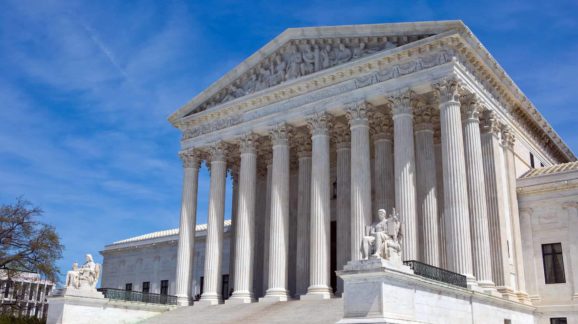Supreme Court Requires Involvement of Principal Officers Before Final Decisions

Photo Credit: Getty
Today, the Supreme Court issued a decision in United States v. Arthrex that has massive implications for the limits on the administrative state. It did this by declaring unconstitutional the exercise of final executive authority by Patent Law Judges (PLJs) because they are not Senate-confirmed. Senate confirmation is essential because, under Article II, Section 2, Clause 2 of the Constitution, all principal officers must be confirmed by the Senate.
In the Declaration of Independence, the American revolutionaries accused the King of England of “erect[ing] a multitude of New Offices, and sent hither swarms of Officers to harrass our people, and eat out their substance.” Weary of letting the new government similarly create a massive number of officers with the power to harass people, the Constitution requires that the Senate confirm all principal officers. Inferior officers can be created by statute and appointed without Senate confirmation.
But what is the distinction between principal and inferior officers? The Constitution doesn’t say but still explicitly refers to the two different categories of officers. In Arthrex, the Court distinguished between principal and inferior officers as applied to PLJs.
The Supreme Court described PLJs as having the “power to render a final decision on behalf of the United States without any such review by their nominal superior or any other principal officer in the Executive Branch.” On this basis, according to the Court, “History reinforces the conclusion that the unreviewable executive power exercised by PLJs is incompatible with their status as inferior officers.”
In addition to early statutes and court decisions, the Court examined the decisions of Alexander Hamilton as the first Secretary of the Treasury. Hamilton wrote that, “The power to superintend, must imply a right to judge and direct,” thereby ensuring that “the responsibility for a wrong construction rests with the head of the department, when it proceeds from him.”
This political accountability and popular control of the government is what makes this important. If a bad or unpopular action by the government can be taken by someone unaccountable to the president (either directly or indirectly), then the president can disclaim any responsibility for it. Who then are the voters to blame and vote out of office?
But the implications for this decision go far beyond the PLJs directly at issue. The Court tried to limit the binding implications of its decision by writing that “we do not address supervision outside the context of adjudication.” But if the Appointments Clause requires this kind of political accountability for adjudicators, why wouldn’t the same clause apply to the issuance of rulemakings?
The government argued for eliminating the removal of PLJs’ removal protections, but instead the Court removed the limitations on review by the principal officer who heads the agency. As such, the court declined to decide if at-will removal by a principal officer would be sufficient, so that is still an open question.
Like adjudications, rulemakings are final decisions of the government. They come at the very end of a long notice-and-comment process and can only be reversed by starting over from scratch. They are also the direct exercise of executive power. The logic of this decision implies that the same rules for PLJs should apply to those who issue rulemakings. They need to be a principal officer or, potentially, removeable at will by a principal officer. It may be that only principal officers can issue rulemakings due to its unreviewable final status.
Currently, rules are issued throughout government by various people. In 2019, the Pacific Legal Foundation examined all rules issued by the Department of Health and Human Services (HHS) between 2001 and 2008 and found that 71 percent were unconstitutionally issued by career staff. The worst agency at HHS was the Food and Drug Administration, where only 2 percent of the rules were issued correctly. This illustrates what is happening throughout the government where non-principal officers are issuing rules.
HHS was challenged on one such rule, which applied tobacco regulations to vaping. In the face of that challenge, HHS rubberstamped the original decision, trying to post-ratify it without following the usual procedural and substantive limitations such as the Administrative Procedure Act’s “reasoned decision-making” requirement. A review of this by the Supreme Court is currently being sought and may be considered on Thursday.
This is only a small example of the many federal rules issued by people who are not principal officers, some of whom are not even removeable by principal officers. The implications of today’s Arthrex case could reinforce the political accountability that our administrative state so desperately needs.